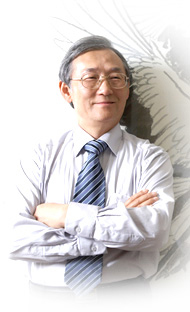Selected Speeches
Dr. Leeserved as the President of SNU from 2006 to 2010. These are selected speeches during his presidency.
International Physiome Symposium 2008 (April 11, 2008)
HIT: 10756
International Physiome Symposium 2008
Dr. Jang-Moo Lee
President of Seoul National University
Seoul National University Hospital
April 11, 2008
Distinguished guests, respected colleagues, and ladies and gentlemen,
On behalf of Seoul National University, I wish to express my deepest appreciation for all of you for your invaluable contributions during the two-day-long symposium. It is a great honour indeed to have so many leaders of the International Human Physiome Project at our university hospital for this global symposium.
I would like to express my heartfelt gratitude to all of the participants in this symposium, especially to Professor Earm and his distinguished colleagues for their establishment of excellent collaborative projects with eminent scholars from universities around the world.? In addition, let me take this opportunity to thank Dr. John Hood, Vice Chancellor of Oxford University, for his long-standing support for collaborative research in medical science for nearly thirty years.
My understanding is that breaking the human being down into his or her molecular parts, the genes and proteins, was the great achievement of medical science in the 20th century. It was symbolised by the complete sequencing of the human genome at the turn of the century. The more difficult job now is to understand how all of those parts fit together to produce the human as a whole. We all hope that, during the 21st century, we will see that more difficult task performed.? This is important because so many of the diseases that remain to be conquered and that affect aging populations particularly seriously, including those here in Korea, are multi-factorial diseases. The Human Physiome Project is designed precisely to address multi-factorial problems.
There is also a specific Korean interest in this project. As many of you are well aware, we have two medical traditions in our country: the Western medical science tradition and the native tradition based on traditional Chinese medicine, which is called Sasang (Four Constitutional Types) here in Korea. An integrative and holistic approach to Western medical science could be the basis of building a bridge between these two traditions.
Let me now draw my remarks to a close by expressing my hope that the symposium has greatly benefited all participants in addition to providing a foundation for future collaborative efforts.
Once again, my deepest appreciation for the sponsored institutions, organizers, staff members, and international scholars involved in the symposium.
Thank you.
